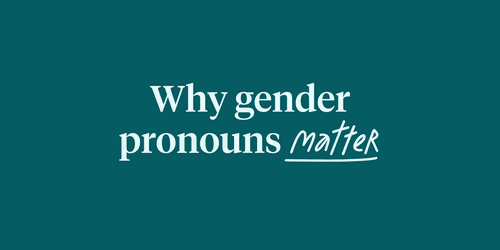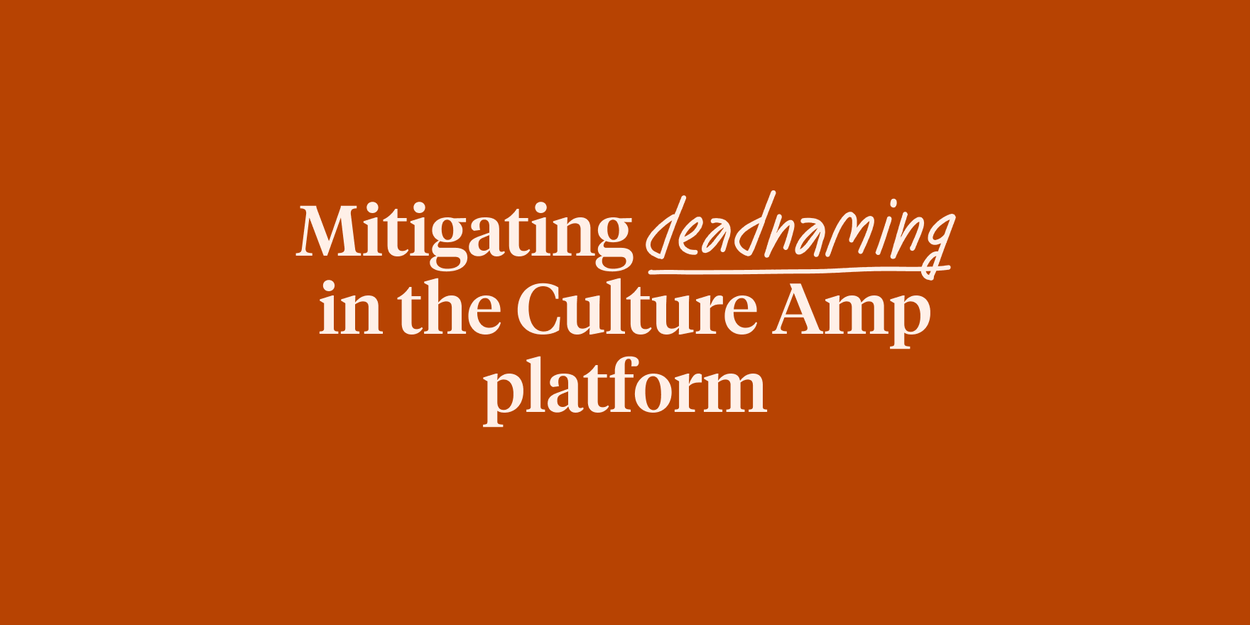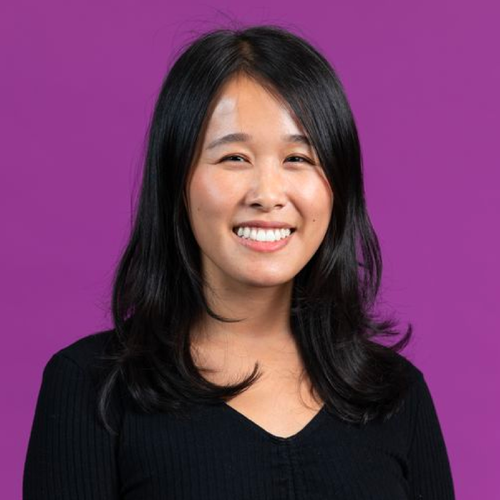
How Culture Amp put equitable design into practice in our platform

Written by

Senior Content Marketing Manager, Culture Amp
When Aubrey Blanche joined Culture Amp to work on diversity, equity, and inclusion, she was adamant that her title be “Director of Equitable Design & Impact.”
“I basically invented my own title,” she recounts. “I wanted this title because it spoke to how we would achieve our goals…by intentionally designing our processes, experiences, and products to produce equity. We believe that by focusing on equitable outcomes, diversity & inclusion will be a natural byproduct.”
The distinction is important – and it’s one that we at Culture Amp always strive to honor, both internally in our workplaces and externally through our platform.
In this article, we share more about our approach to equitable design and explain how we put these principles into practice as we continue to improve the Culture Amp platform.
What is equitable design?
UX Planet defines equitable design as such:
“Equitable Design aims at designing for groups that have been historically underrepresented and addresses diverse identities, taking into consideration gender, sexuality, race, ethnicity, nationality, and abilities.“
Aubrey elaborates, “Equitable design is a practice that seeks to take into account the barriers and inequities that people from historically marginalized people face and design systemic solutions to ensure that they are treated fairly and can access equal opportunities.”
Equitable design, as the name implies, is centered on creating equity, which is the process of addressing and mitigating imbalances between different groups in society and, by extension, our organizations.
One of the key principles of equitable design at Culture Amp is to design for equity by prioritizing the experiences and needs of the most impacted and marginalized employees, especially those who are intersectionally marginalized. In doing this, we improve everyone's experiences – a benefit that will be further explored later in the article.
Putting equitable design into practice: Mitigating deadnaming (and other name wonkiness)
The Culture Amp platform didn’t originally offer meaningful solutions for situations where people’s names change or where they use a name that differs from their legal one. It wasn’t possible for people leaders to override someone’s legal name with their preferred or correct name. The most sensitive of these situations is when somebody is going or has gone through a gender transition, but it can also apply to folks with nicknames, who are getting married or divorced, etc. As you can imagine, being called by a name you no longer want to use can result in emotions ranging from mild annoyance to erasure and traumatization, or can lead to harassment, ostracization, or outright discrimination at work.
Jacob Rigney, Product Designer at Culture Amp, explained, “Our customers were the first to provide us feedback about how our original technical choices weren't serving – and in some cases were actively harming – their employees.” Thanks to their feedback, we were able to prioritize and implement a solution to prevent future instances of harm.
Our product team was especially cognizant of the negative experiences transgender users may have had with our platform. As the most impacted community, it was essential that we rolled out a fix as soon as possible to prevent future instances of deadnaming – which is the act of calling a nonbinary and/or trans individual by the name they used before their transition.
Deadnaming can result in “outing” – which is when an LGBTQ* person’s sexual orientation or gender identity is revealed without their consent. This can have many adverse effects, including:
- Depression
- Stress
- Discrimination
- Increased risk of harassment and violence
Deadnaming can happen in various ways, whether it’s in a conversation with family, coming across an outdated document – or, as with Culture Amp, in a digital platform that doesn’t have the capability to update or override legal names.
By unifying people’s feedback with the principles of equitable design, we prioritized improving the experience of our trans users and implemented a solution to address this problem, which you can read more about here.
Why prioritizing equitable design works for everyone
“One of the key principles of equitable design is to design for the most marginalized person an issue will affect. In design jargon, this is known as the ‘stress case,” explains Jacob.
“In this case, the person most impacted is a user who might be deadnamed by our platform. By designing for them and specifically improving their experience, we were able to improve the experience for a whole host of other people as well.”
Culture Amp’s fix will benefit not only those who are trans but also those who want to:
- Get married or divorced
- Use a nickname
- Anglicize or de-anglicize their names
- Change their legal name because they dislike it
- Avoid name discrimination or prejudice
This is just one example of how designing for the most impacted groups works to improve the user experience overall. Other examples include OXO’s highly-rated vegetable peeler, originally designed for people with arthritis in their hands, and closed captions, originally designed for people who are d/Deaf or hard of hearing.
We can even look outside product design to consider how we can design equitable employee experiences. Workplace flexibility and telecommuting are essential for some people living with disabilities, but are highly valued by employees in general. Structured performance review processes have been found to significantly close gender gaps around recognition, growth, and workload – and the resulting clarity around timelines and expectations benefits the entire workforce.
As Aubrey says, “By designing for equity for marginalized people, we do better for everyone.”
By designing for equity for marginalized people, we do better for everyone.
Aubrey Blanche
Director of Equitable Design and Impact
What’s next
Equitable design is a set of principles we aim to always adhere to. We are extremely grateful to our customers and the Campers (what we call Culture Amp employees) who advocated for this change, as well as the teams who have implemented and built out the solution.
That being said, we know that we’ll never be done – another principle of equitable design: equity is a process, not a destination. We will continue to find ways to build a platform and workplace that genuinely reflect our commitment to diversity, equity, and inclusivity.
As we roll out this change, we'll monitor the feedback we get from our users on these improvements, and their input will shape our plans for the future.


